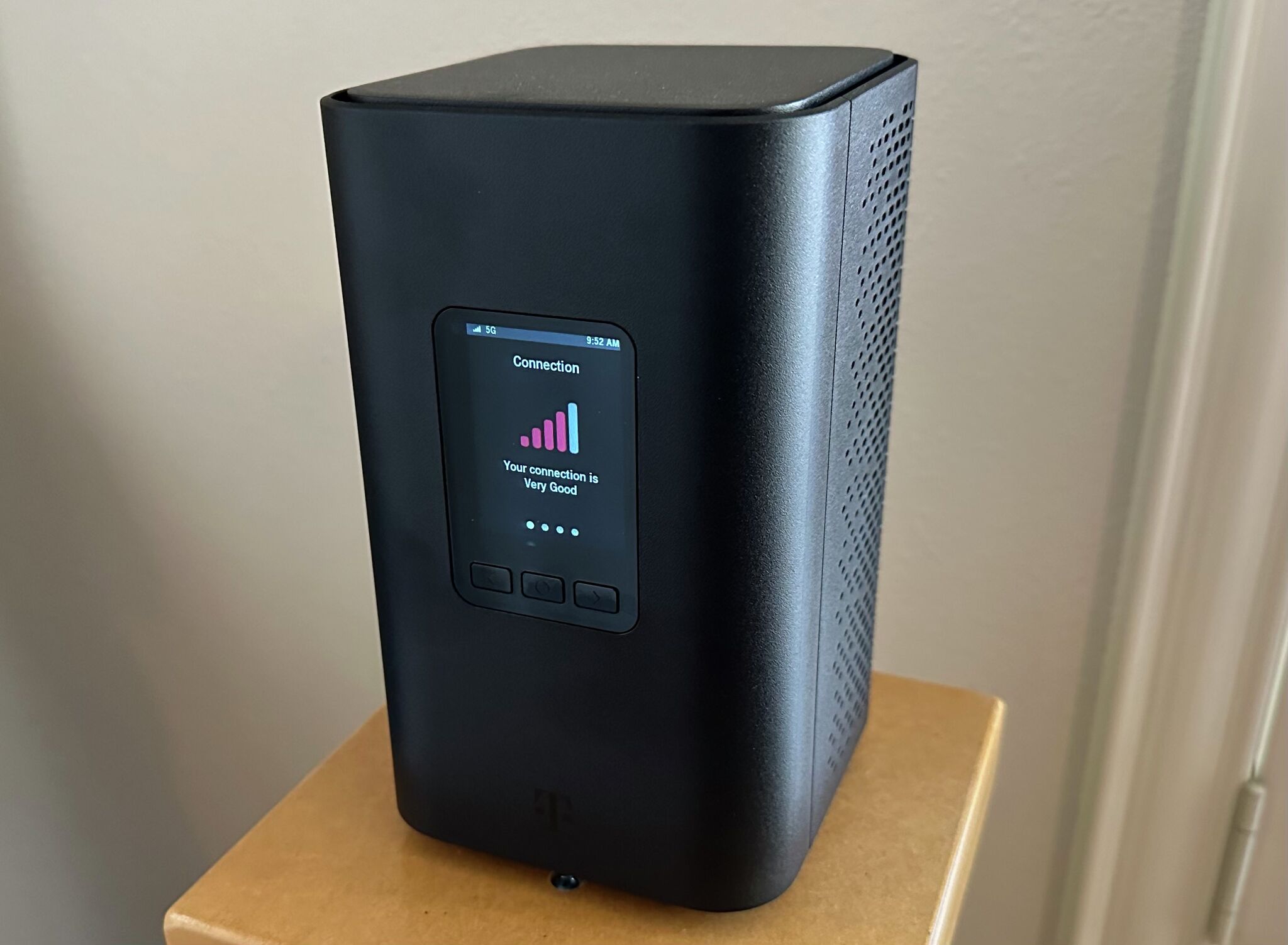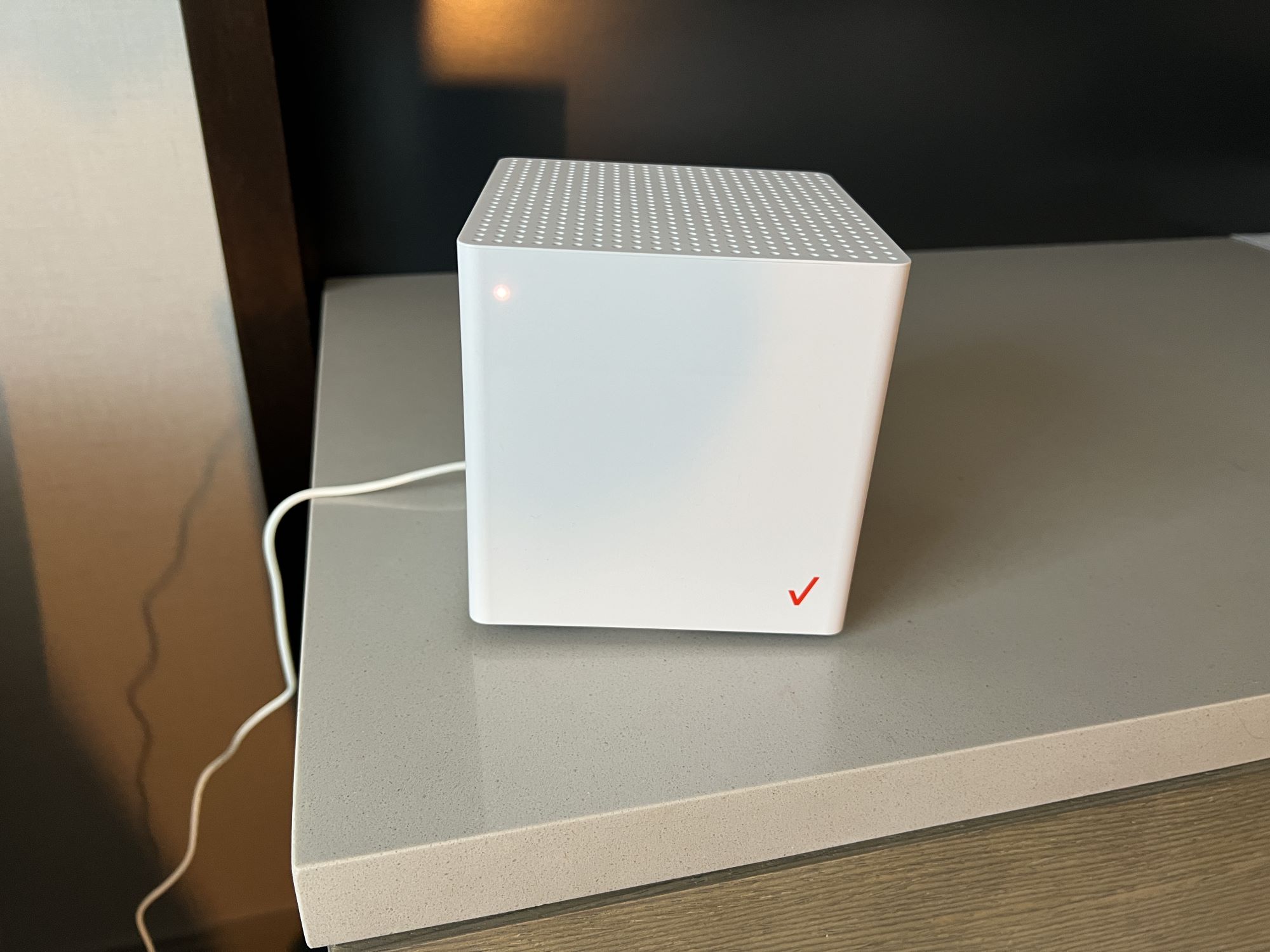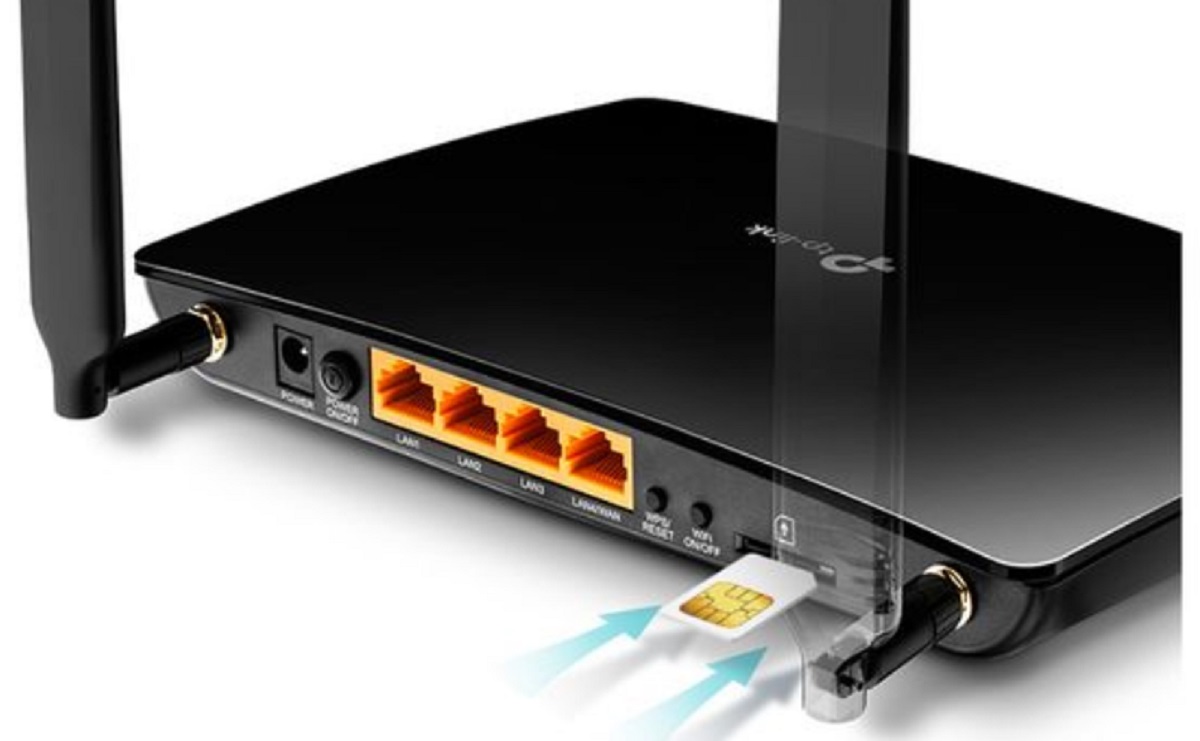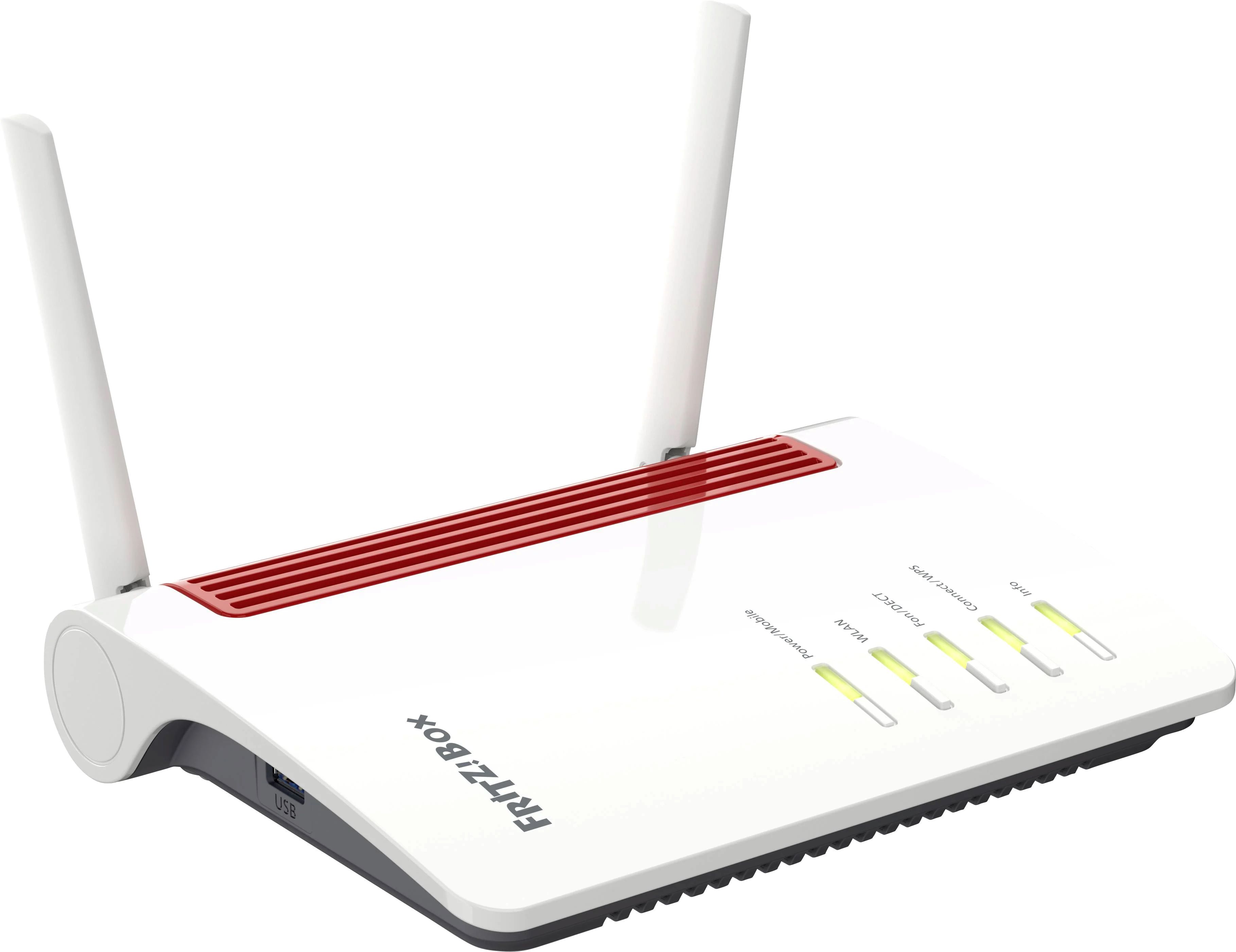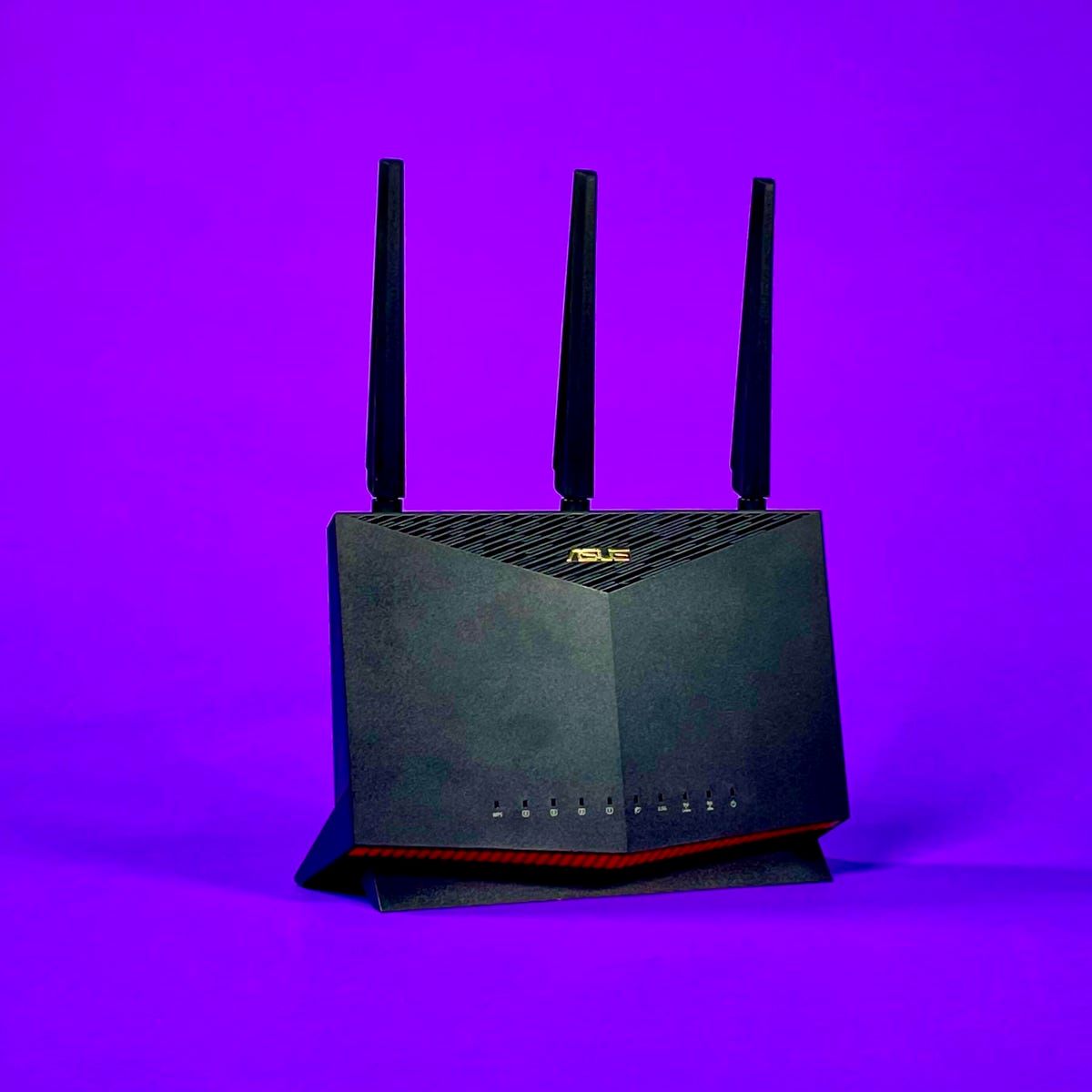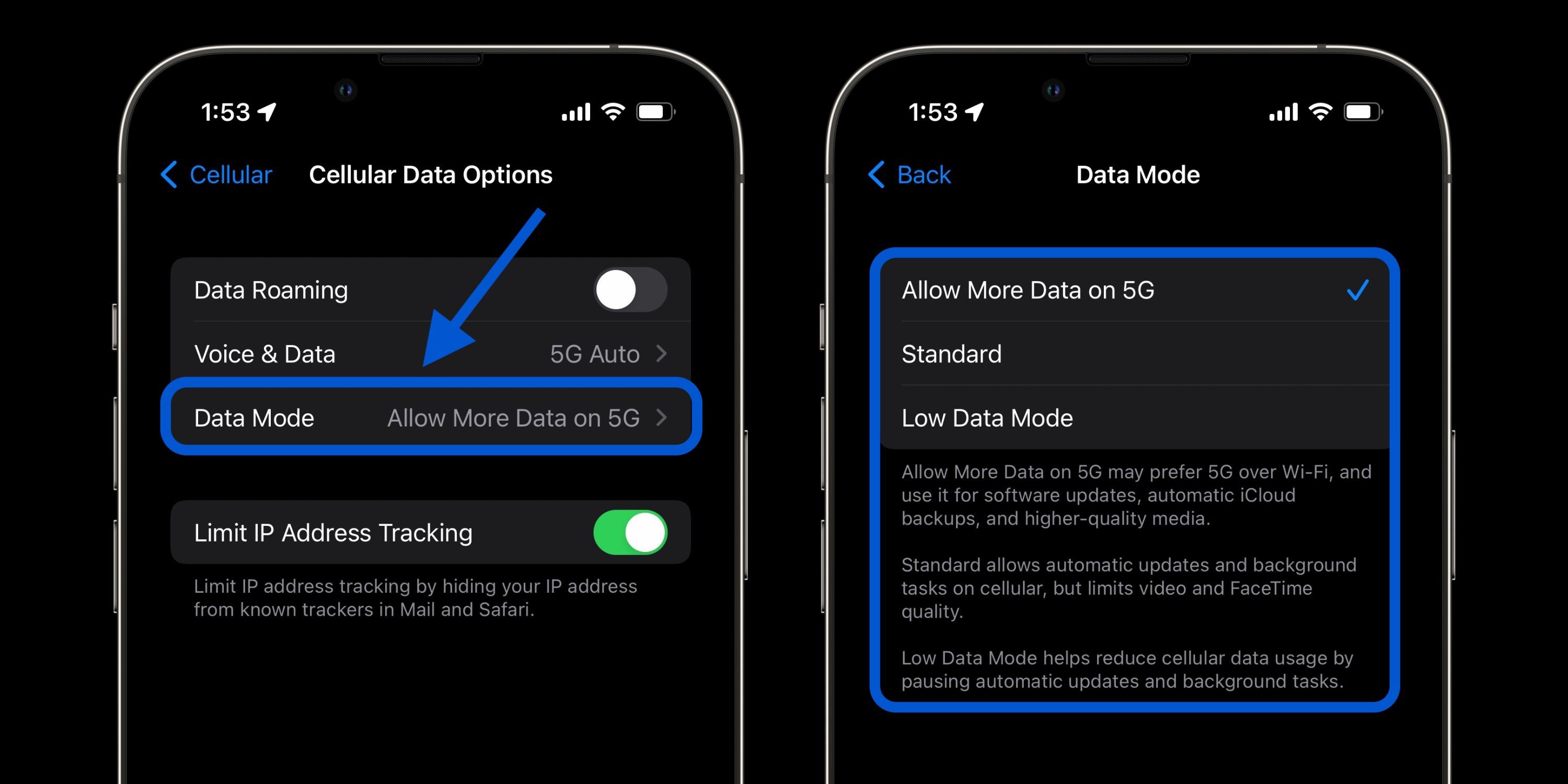What is 5G Home Internet?
5G Home Internet, also known as 5G Fixed Wireless Access (FWA), is the latest generation of wireless technology that aims to revolutionize home internet connectivity. It utilizes high-frequency radio waves to transmit data at unprecedented speeds, offering a significant upgrade in terms of both download and upload speeds compared to previous generations.
With 5G Home Internet, households will no longer have to rely on traditional wired connections, such as cable or fiber optic lines, to access the internet. Instead, a wireless 5G connection is established through a cellular network, allowing users to enjoy ultra-fast speeds, low latency, and reliable connectivity.
One of the key benefits of 5G Home Internet is its ability to provide a more flexible and convenient internet solution. Unlike fixed-line connections, which require physical installation and may be subject to availability limitations, 5G Home Internet can be accessed wirelessly, making it especially advantageous for rural areas or regions with underdeveloped infrastructure. This means that households in remote locations can have access to high-speed internet without the need for complex infrastructure deployment.
Moreover, 5G Home Internet offers a promising alternative to traditional broadband services in urban areas as well. It unlocks the potential of smart homes, streaming services, and the Internet of Things (IoT) by providing a stable and fast connection for multiple devices simultaneously.
Another advantage of 5G Home Internet is its low latency, which refers to the delay between sending and receiving data. With reduced latency, activities that require real-time communication, such as online gaming, video conferencing, and remote surveillance, are significantly enhanced, offering a more seamless and interactive experience.
Overall, 5G Home Internet has the potential to revolutionize the way we connect to the internet from our homes. Its faster speeds, lower latency, and wireless convenience make it an appealing choice for both urban and rural areas alike. As the infrastructure and availability continue to expand, more households will have the opportunity to experience the benefits of 5G Home Internet.
The Advantages of 5G Home Internet
5G Home Internet offers numerous advantages over traditional fixed-line connections, making it an exciting prospect for home internet connectivity. Here are some of the key benefits:
- Blazing Fast Speeds: 5G Home Internet boasts incredibly fast download and upload speeds, surpassing what is currently available with broadband connections. With speeds of up to several gigabits per second, users can enjoy seamless streaming, quick downloads, and smooth online gaming experiences.
- Low Latency: One of the major advantages of 5G Home Internet is its low latency. This means that the delay between sending and receiving data is significantly reduced, resulting in real-time responsiveness. This is particularly advantageous for applications that require immediate feedback, such as online gaming, video conferencing, and virtual reality experiences.
- Increased Bandwidth: 5G Home Internet provides a broader bandwidth, which means that more devices can connect simultaneously without experiencing a noticeable drop in performance. This is especially beneficial for households with multiple users and a growing number of smart devices, ensuring a seamless and uninterrupted internet experience for all connected devices.
- Improved Connectivity in Remote Areas: 5G Home Internet has the potential to bridge the digital divide by bringing high-speed connectivity to remote and underserved areas. Since it relies on wireless transmission, the need for physical infrastructure deployment, such as laying cables, is eliminated. This makes it a cost-effective and practical solution for regions with limited access to traditional broadband services.
- Flexibility and Easy Setup: Unlike wired connections, where installation can be time-consuming and disruptive, setting up 5G Home Internet is relatively straightforward. Users can simply connect their devices to a 5G-enabled router or access point to establish a wireless connection, enabling them to enjoy high-speed internet without the need for extensive installations.
These advantages demonstrate the significant enhancements that 5G Home Internet brings to home connectivity. With its lightning-fast speeds, low latency, increased bandwidth, and wider availability, it promises to revolutionize the way we use the internet at home. As 5G infrastructure continues to expand and more providers offer 5G Home Internet services, households around the world can expect to reap the benefits of this innovative technology.
The Current Availability of 5G Home Internet
As of now, the availability of 5G Home Internet varies depending on your location and service provider. While 5G wireless networks are being deployed in many countries, the availability of 5G Home Internet services is still in its early stages. However, it is rapidly expanding as more infrastructure is built and providers roll out their offerings.
Several telecom companies have already begun offering 5G Home Internet services in select cities. These early deployments often focus on urban areas with high population density and strong 5G coverage. Major telecom providers are continuously expanding their coverage areas to reach more households and deliver the benefits of 5G Home Internet.
It’s important to note that the expansion of 5G Home Internet services is an ongoing process. Network infrastructure needs to be built, and regulatory compliance must be met before services can be offered to consumers. This means that while 5G Home Internet may be available in certain areas, it may not yet be accessible to everyone.
Another factor that affects the availability of 5G Home Internet is the compatibility of devices and equipment. To access 5G Home Internet, you would typically need a 5G-compatible router or modem. These devices are becoming more readily available as the demand for 5G connectivity increases. It’s recommended to check with your service provider regarding the compatibility of your existing home internet equipment or inquire about obtaining 5G-compatible devices.
It’s worth mentioning that the availability of 5G Home Internet is not limited to big cities and urban areas. Telecom companies and internet service providers are actively working to expand their coverage to suburban and rural areas as well, aiming to bridge the digital divide and provide fast, reliable internet connectivity to underserved regions.
If you’re interested in subscribing to 5G Home Internet, it’s advisable to regularly check with your local internet service providers or telecom companies to stay updated on their offerings and coverage areas. As the expansion continues, the availability of 5G Home Internet is expected to increase, bringing faster, more reliable connectivity options to a wider range of households.
Expected Release Dates for 5G Home Internet
As the demand for faster and more reliable home internet connectivity grows, the anticipation for the widespread availability of 5G Home Internet is also on the rise. While exact release dates for 5G Home Internet services may vary across different regions and service providers, there are some general trends and expectations for its rollout.
Many countries have already commenced the deployment of 5G infrastructure, and some have even started offering 5G Home Internet services in select areas. However, the full-scale rollout of 5G Home Internet is expected to take several years, as it requires significant investment in infrastructure and network expansion.
Major telecom companies and internet service providers are actively working on expanding their 5G Home Internet offerings to new cities and regions. They are constantly evaluating the market demand and investing in network upgrades to deliver the benefits of 5G connectivity to more households.
While it is challenging to provide specific release dates due to the unpredictable nature of technological advancements and regulatory requirements, experts anticipate that 5G Home Internet will become increasingly accessible over the next few years.
It is projected that by [year], a significant portion of [country or region] will have access to 5G Home Internet services. Major cities and metropolitan areas are likely to be among the first to receive widespread coverage, with rural and suburban areas catching up as the infrastructure expands.
Additionally, collaborations among telecom companies, equipment manufacturers, and regulatory bodies are crucial in ensuring the smooth deployment of 5G networks, which, in turn, will expedite the availability of 5G Home Internet. As technology continues to advance and more providers enter the market, competition will also drive the expansion of 5G Home Internet services.
If you’re eagerly awaiting the arrival of 5G Home Internet in your area, it’s recommended to stay informed and regularly check with local service providers for updates on their rollout plans. As the technology matures and infrastructure investments increase, the availability of 5G Home Internet is expected to grow, providing faster speeds, lower latency, and enhanced connectivity options for homes around the world.
The Impact of 5G Home Internet on Society
The advent of 5G Home Internet is poised to have a profound impact on society. This innovative technology is expected to bring about significant changes and improvements in various aspects of our lives. Here are some key areas where 5G Home Internet is expected to make a notable impact:
1. Enhanced Connectivity: 5G Home Internet will revolutionize how we connect and communicate. With faster speeds and lower latency, it will enable seamless video conferencing, online gaming, and virtual reality experiences. It will also lay the foundation for the widespread adoption of emerging technologies like augmented reality and telemedicine, transforming the way we work, learn, and interact.
2. Economic Growth: The deployment of 5G Home Internet is expected to stimulate economic growth and innovation. It will open up new opportunities for businesses, entrepreneurs, and startups to develop and deliver high-bandwidth applications and services. Industries such as autonomous vehicles, smart cities, and IoT will thrive with the increased connectivity and reliability provided by 5G networks.
3. Bridging the Digital Divide: 5G Home Internet has the potential to bridge the digital divide by providing high-speed connectivity to underserved areas. The wireless nature of 5G technology makes it easier to access in remote and rural regions. This will enable equitable access to education, healthcare, job opportunities, and other essential services, empowering individuals and communities to thrive.
4. Smart Homes and IoT: 5G Home Internet will fuel the growth of smart homes and the Internet of Things (IoT). With its increased bandwidth and capacity to connect multiple devices, it will support a wide range of interconnected smart devices, making our homes more efficient, secure, and convenient. From smart appliances to energy management systems, 5G Home Internet will transform how we live and interact with our surroundings.
5. Innovation and Collaboration: The lightning-fast speeds and low latency of 5G Home Internet will spur innovation and collaboration across various industries. It will encourage the development and adoption of new technologies and applications, leading to advancements in fields such as artificial intelligence, robotics, and cloud computing. Additionally, the low latency provided by 5G networks will enable real-time collaboration and remote work capabilities, fostering global connectivity and cooperation.
Overall, the impact of 5G Home Internet on society is expected to be far-reaching. It will revolutionize how we connect, communicate, and interact with the world around us. From driving economic growth and bridging the digital divide to enabling the proliferation of smart technologies and fostering innovation, 5G Home Internet has the potential to reshape our society and unlock new opportunities for individuals, businesses, and communities.
The Challenges in Deploying 5G Home Internet
While the potential of 5G Home Internet is immense, its deployment also comes with a unique set of challenges. Overcoming these hurdles is essential to ensure a seamless transition to this next-generation technology. Here are some of the key challenges in deploying 5G Home Internet:
1. Infrastructure Development: Deploying 5G Home Internet requires a significant investment in infrastructure. This includes the installation of new cellular towers, small cells, and fiber optic backhaul networks. Expanding the infrastructure to adequately cover both urban and rural areas is a complex and time-consuming process that involves collaboration among telecommunication companies, governments, and regulatory bodies.
2. Spectrum Availability: An adequate amount of spectrum is necessary to support 5G connectivity. However, the availability and allocation of spectrum can be challenging. Spectrum is a finite resource, and different countries have different regulations and licensing processes. Coordinating and managing spectrum allocation to meet the increasing demand for 5G Home Internet is a complex task.
3. Compatibility and Interoperability: To access 5G Home Internet, users need devices that are compatible with the 5G network. This raises compatibility challenges, as older devices may not be able to leverage the full capabilities of 5G technology. Additionally, ensuring interoperability between different 5G network equipment, devices, and service providers requires industry standards and collaborations.
4. Regulatory Frameworks: Deploying 5G Home Internet involves complying with regulatory requirements and navigating various legal frameworks. Regulations may cover aspects such as spectrum allocation, tower placement, environmental impact assessments, and safety standards. These regulations can vary between jurisdictions and may slow down the rollout of 5G Home Internet if not effectively managed.
5. Public Perception and Acceptance: The public’s understanding and acceptance of 5G technology play a crucial role in its successful deployment. Misinformation and concerns about health risks, privacy, and cybersecurity can create challenges and resistance. Clear communication, public education, and addressing concerns transparently are vital to build trust and ensure the acceptance and widespread adoption of 5G Home Internet.
6. Cost and Affordability: Deploying 5G Home Internet requires significant financial resources from both service providers and consumers. Building the necessary infrastructure and upgrading network equipment involves substantial costs. Additionally, access to 5G Home Internet may require users to invest in new devices and equipment. Ensuring the cost and affordability of 5G Home Internet services for consumers, especially in underserved areas, is a challenge that needs to be addressed.
Overcoming these challenges requires collaboration between telecom companies, governments, regulatory bodies, and industry stakeholders. In fostering an enabling environment, facilitating infrastructure development, addressing regulatory frameworks, and promoting public awareness, the deployment of 5G Home Internet can be accelerated. By recognizing and addressing these challenges, we can unlock the full potential of 5G Home Internet and reap its benefits for the society.
How to Prepare for 5G Home Internet
The impending arrival of 5G Home Internet brings exciting opportunities for faster and more reliable connectivity. To prepare for the transition to this next-generation technology, here are some steps you can take:
1. Stay Informed: Keep yourself updated on the latest developments regarding 5G Home Internet in your area. Follow news updates from your local service providers, as they will often announce their rollout plans and coverage areas. Regularly check their websites or social media channels for any updates or announcements.
2. Check Device Compatibility: Ensure that your devices are 5G ready or at least compatible with the upcoming technology. Check with your device manufacturer or service provider to see if your current routers, modems, and other networking equipment can support 5G connectivity. If not, consider upgrading to devices that are compatible with 5G Home Internet.
3. Assess Your Internet Needs: Evaluate your current internet needs and determine whether 5G Home Internet aligns with your requirements. Consider factors such as internet speed, data usage, and the number of devices connected simultaneously. Research the expected benefits of 5G Home Internet and assess how they align with your specific needs and expectations.
4. Research Service Providers: Look into different service providers that offer 5G Home Internet in your area. Compare their plans, pricing, and customer reviews. Consider factors such as reliability, customer service, and the coverage they offer. Take note of any introductory offers or promotions that may be available to early adopters of 5G Home Internet.
5. Check for Network Coverage: Verify the availability of 5G network coverage in your area. Service providers often provide coverage maps on their websites, which can help you determine whether 5G Home Internet is accessible where you reside. Keep in mind that coverage may initially be limited to certain neighborhoods or cities, so pay attention to the areas specified on the coverage maps.
6. Contact Your Service Provider: Reach out to your current internet service provider to inquire about their plans for 5G Home Internet. Ask about their rollout timeline, pricing, and any special promotions they may have for existing customers. If they don’t offer 5G Home Internet, explore other options available in your area.
7. Upgrade Your Devices: If your current devices are not compatible with 5G technology, consider upgrading to 5G-compatible routers, modems, or smartphones. This will ensure that you can take full advantage of the faster speeds and lower latency offered by 5G Home Internet.
8. Educate Yourself: Take the time to learn more about 5G technology, its benefits, and its potential impact on your daily life. Stay informed about the latest developments, industry trends, and emerging applications enabled by 5G Home Internet. This knowledge will help you make informed decisions and fully embrace the benefits of this advanced technology.
By following these steps and actively preparing for the arrival of 5G Home Internet, you can position yourself to take full advantage of the faster speeds, lower latency, and enhanced connectivity that this technology offers. Stay informed, reassess your internet needs, and explore the options available to you to ensure a smooth transition into the era of 5G Home Internet.
Conclusion
5G Home Internet presents an exciting future for home internet connectivity. With its blazing fast speeds, low latency, and widespread coverage, it has the potential to revolutionize how we connect, communicate, and interact with the world around us. From enhanced connectivity and economic growth to bridging the digital divide and fostering innovation, the impact of 5G Home Internet on society is expected to be profound.
While 5G Home Internet is still in its early stages of deployment, with coverage varying across regions and service providers, it is steadily expanding. Major telecom companies and internet service providers are working diligently to build the necessary infrastructure and ensure the availability of 5G Home Internet to a wider range of households.
To prepare for the arrival of 5G Home Internet, it is important to stay informed about the developments in your area, check device compatibility, assess your internet needs, and research different service providers. Upgrading your devices to 5G-compatible ones and educating yourself about the technology will help you fully embrace the benefits of 5G Home Internet.
However, the deployment of 5G Home Internet also comes with its set of challenges. Infrastructure development, spectrum availability, compatibility, and regulatory frameworks are some of the hurdles that need to be addressed to ensure a smooth transition. Public perception and affordability are also important factors that need attention to ensure widespread acceptance and adoption of 5G Home Internet.
Despite these challenges, the future looks promising for 5G Home Internet. As the technology continues to evolve and expand, more households will have access to high-speed, reliable connectivity, unlocking new opportunities and transforming the way we live, work, and connect with one another.
With the potential to bridge the digital divide, power smart homes and the IoT, and drive economic growth, 5G Home Internet has the capacity to reshape the digital landscape and empower individuals, businesses, and communities. As we prepare for this exciting digital revolution, staying informed, proactive, and open to embracing new technology will ensure that we make the most out of the opportunities that 5G Home Internet has to offer.









